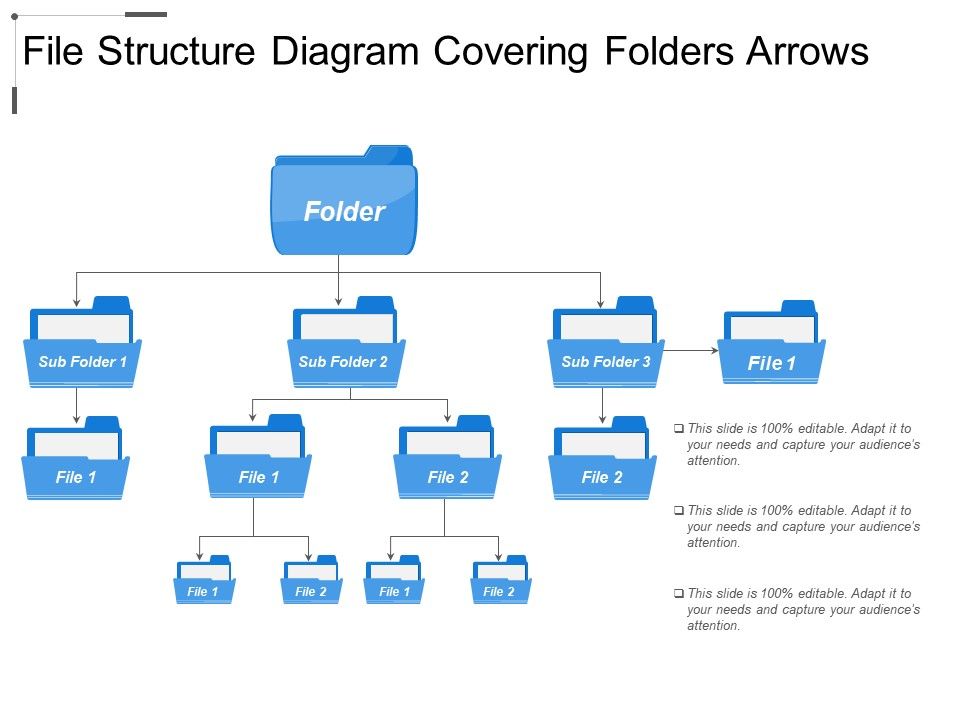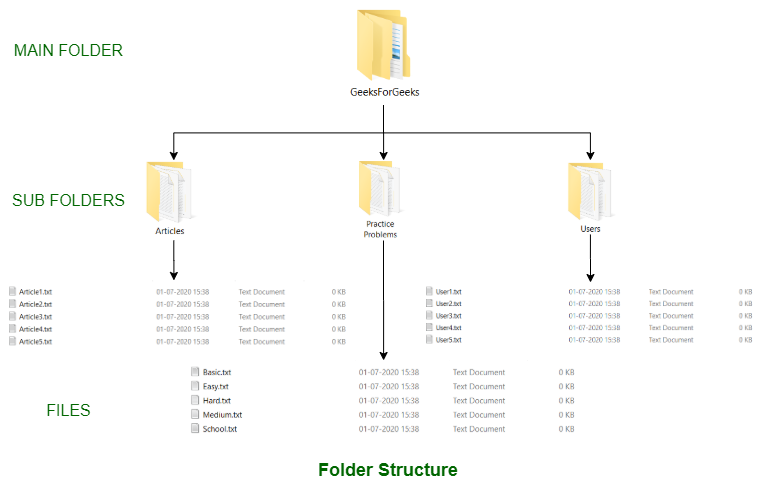Folder Structure Diagram
VisioTreeView is a tool to quickly draw the folder structure in a document Visio. Easy to use template containing master the shapes and macros. by sequentiallydisclosure of relevant folders allows you to quickly display the desired portion of the directory structure. |
The template contains everything you need for automated drawing folder structure.Work is performed in the following sequence:
- Create a new document based on a template.
- Draw logical drives.
- Expand consistently the desired branches.
Defining the Folder Structure. Find the records you are most interested in and corresponding folder structures in the different sections below. These examples are separated by type of cut-off, which is the trigger that starts the clock for the retention to count down. Visio Professional includes three templates for diagramming directory structures, as Table 14-1 shows. To start a new diagram, choose File, New, Network, and then choose a template for the type of directory diagram you want to create. Visio opens a drawing page that includes the Directory Services menu and the Directory Navigator.
Below is a sample image that obtained by using a template.

Each menu command scans and reveals only one branch.Not interesting structures may be not expanded to avoid cluttering the drawing.
The PowerPoint Folder diagram you’ll learn today is: Once you learn to make this basic diagram, you can make your own variations like these: Since you may not get readymade folders in the exact colors you want, it helps to learn to create this diagram quickly. In the Windows command prompt you can use 'tree /F' to view a tree of the current folder and all descending files & folders. In File Explorer under Windows 8.1: Select folder. Press Shift, right-click mouse, and select 'Open command window here'. Type tree /f tree.txt and press Enter. The PowerPoint Folder diagram you’ll learn today is: Once you learn to make this basic diagram, you can make your own variations like these: Since you may not get readymade folders in the exact colors you want, it helps to learn to create this diagram quickly.
Unnecessary parts of the image can be removed by traditional methods.Also you can use 'Undo' command.
All commands are executed using the context menu of the page and shapes.
- Show Disks - first page menu. It scans available logical drives and draws them as a folder.
- Expand - folders menu, that scans selected folder and draws subfolders as vertical column. Only one level.
- With files - folders menu. The same as expand, but draws not only folders, but files.
- Select - folders menu, that selects the column of folders or files located directly below selected folder.Used to move shapes.
The path to the appropriate folder saved in shape. After saving the documentyou may open it on the same computer and continue work at any time.
But after moving to another machine with other folder structure the path becomes invalid.After that it can only be used as an image. The reveal of folders will be impossible.
Shape saved also a hyperlink to the appropriate folder.This means that by clicking on a hyperlink, you can open it in Windows Explorerwith one click without tedious transitions.
Drawing can be saved as illustration and included in the user's manual or description.
Drawing can be saved as a Visio file. If later the directory structure will be changed,you can reopen drawing and update the desired track.
This videoshows an example of using the template.
Template works with Visio 2003, 2007, 2010, 2013. With both 32-bit and 64-bit versions.
If you need a slightly different functionality and want to change the template, email to gCroc@yandex.ru.
Frequently Asked Questions
I'm using 'Show Disks' menu, but nothing happens. Why?
Perhaps you have disabled macros. To activate the macro, do the following:
Visio 2007:
- 1. Allow macro - Tools / Trust Center / Macro settings / Enable all macros.
- 2. Or add a template location to trusted locations - Tools / Trust Center / Trusted locations. Add new location.


How to install it?
A special installation don't needed. The template can be opened from any location.However, it is better to place it in a permanent location, such as ...Documents and SettingsAll UsersTemplatesand add this location to Tools / Option / Advanced / File paths / Templates.In this case the folder with a custom template will be available on every start of Visio.

A hierarchical file system is how drives, folders, files, and other storage devices are organized and displayed on an operating system. In a hierarchical file system, the drives, folders, and files are displayed in groups, which allows the user to see only the files they're interested in seeing. For example, the picture shows the Windows directory (Windows) folder hierarchy containing the System32, Tasks, and Web folders. Each of these folders could have hundreds of their own files, but unless they are opened the files are not displayed.
In GUI operating systems, such as Microsoft Windows, the user expands a drive or folder to see its contents by double-clicking the icon. Once the file or program is located, double-click the icon to open the file or execute the program.
In a non-GUI operating system, such as MS-DOS or the Windows command line, the drive and directories are listed as text. For example, if you were on the C: drive and in the Windows spool directory, the MS-DOS path may look like the following example.
Related pages
File Folder Structure Diagram
Console tree, Directory, Drive, File, File system, Operating system terms, Parent and child, Root, ZFS